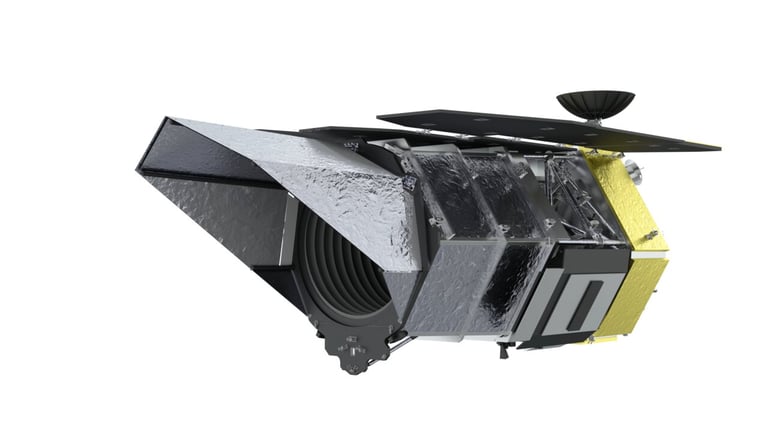NASA's Roman Telescope: A Game-Changer in Asteroid Defense Set for 2026 Launch
August 26, 2025
The NASA Nancy Grace Roman Space Telescope, scheduled for launch in October 2026, will play a crucial role in Earth's asteroid defense by collaborating with the Vera C. Rubin Observatory and the upcoming NEO Surveyor mission to create a comprehensive, multi-wavelength asteroid detection network.
This network will combine wide sky scans, thermal infrared detection, and high-resolution follow-up observations, with Rubin discovering new objects, NEO Surveyor detecting thermal signatures, and Roman conducting detailed follow-up studies.
Positioned at the Earth-Sun L2 Lagrange point about 1.5 million kilometers from Earth, Roman will utilize near-infrared observations to study near-Earth objects, providing detailed data on their size, shape, composition, and orbital paths.
Roman's advanced capabilities will significantly improve the precision of asteroid trajectory predictions by two to three orders of magnitude, greatly enhancing assessments of long-term impact threats.
Compared to existing telescopes, Roman's enhanced accuracy in orbit prediction will be vital for planetary defense and long-term impact risk management.
Using high-resolution infrared observations, Roman will determine the physical properties and spectral types of small NEOs, including their composition—rocky, metallic, or icy—which influences impact effects and resource potential.
The telescope's ability to analyze asteroid size, reflectivity, and composition will provide insights into their physical characteristics and potential resource value.
To effectively track fast-moving asteroids streaking across its field of view, Roman will require the development of new data processing techniques.
As a key asset in Earth's planetary defense system, Roman is scheduled to launch in October 2026 and will focus on tracking and analyzing potentially hazardous asteroids and comets.
The combined efforts of Roman, Rubin Observatory, and NEO Surveyor will produce the most comprehensive census of potentially hazardous asteroids, crucial for planetary defense and understanding the small-body population of our solar system.
Summary based on 2 sources

